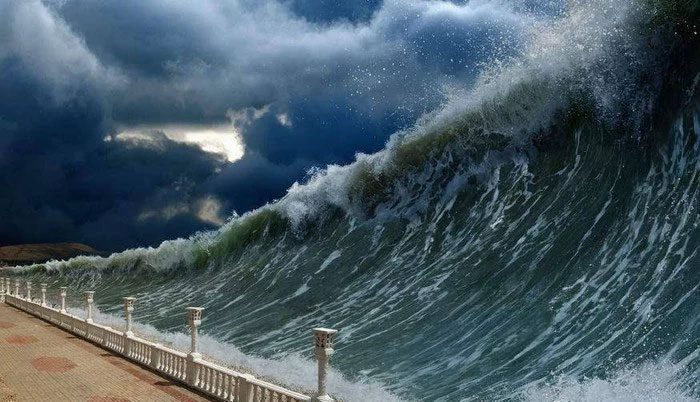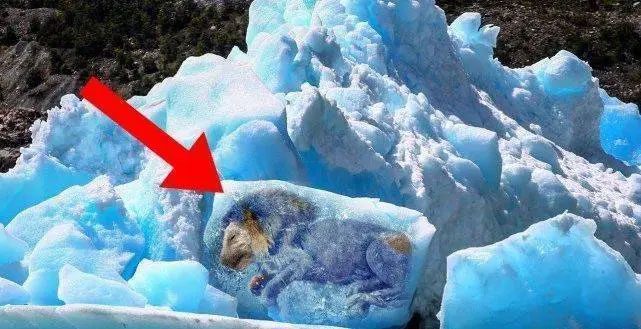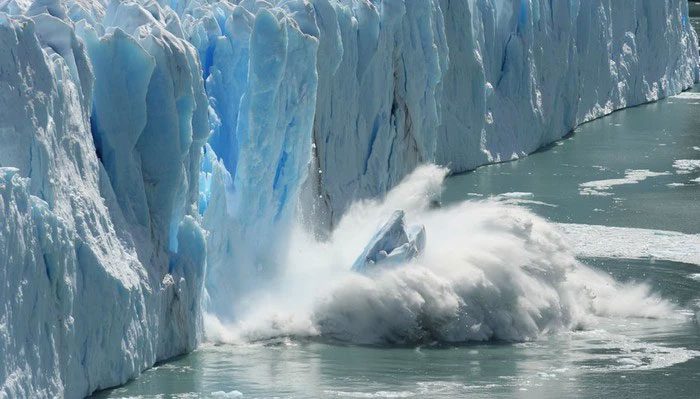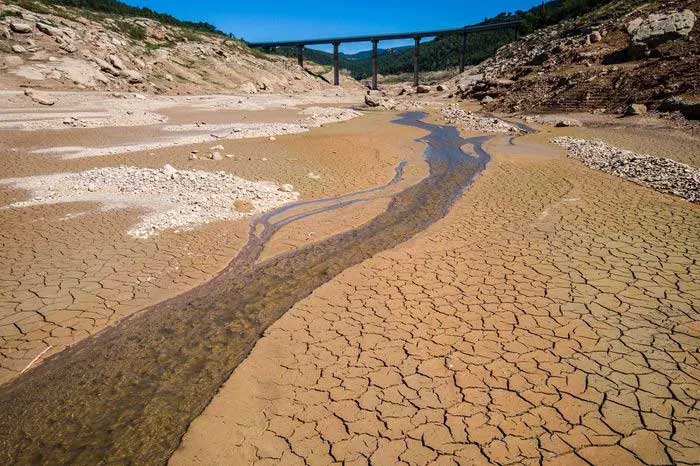If all glaciers on Earth were to melt, the consequences would be unimaginable.
Currently, the area covered by glaciers on Earth is about 16 million km2. In reality, a small amount of ice melts into the ocean each year.
According to scientists, it typically takes hundreds or thousands of years for all the ice on Earth to melt completely. However, what would happen if all glaciers around the world melted overnight?

Sea levels would rise more than 60 m if all glaciers on Earth melted. (Illustrative image)
First, sea levels would rise by 66 meters. In this scenario, coastal cities such as Shanghai (China), New York (USA), and London (UK) would be submerged by this massive flood. This would displace 40% of the world’s population and lead to widespread chaos on the surface.
Second, the melting of all glaciers would trigger a hidden disaster beneath the surface. Rising sea levels would infiltrate the groundwater reserves located deep inland, affecting nearby freshwater aquifers. Notably, these aquifers provide drinking water, irrigation, and cooling water for power plants.
However, the melting of glaciers worldwide would destroy all aquifers.
Third, it would disrupt ocean currents and weather patterns. The ice in Greenland and Antarctica is composed of freshwater. Therefore, when the ice melts, about 69% of the world’s freshwater supply would flow directly into the sea. Once Earth’s glaciers melt, global temperatures would continue to rise, and atmospheric circulation would also be impaired. Higher temperatures would cause all lakes to evaporate, leading to widespread drought, with climates resembling that of deserts.
On the other hand, the increased moisture in the atmosphere would add energy, causing storms and floods to occur more frequently and intensely.

Melting glaciers will awaken ancient viruses.
Fourth, the melting of glaciers on Earth would “awaken” ancient viruses that have been frozen for long periods. This poses a frightening threat to humanity. Previously, in 2015, scientists discovered the accumulation of ancient viruses thousands of years old in the permafrost of Siberia. These ancient viruses are like a sealed Pandora’s box. However, the melting of Earth’s glaciers is the key to opening this box.
Finally, with the sudden rise in sea levels due to the simultaneous melting of glaciers, the Earth’s rotation would gradually slow down. The energy accumulated in the Earth’s crust would be released, causing severe earthquakes to occur regularly around the world. Simultaneously, active volcanoes would erupt immediately.

Global warming is causing ice to melt rapidly.
Of course, no one wants a scenario where all glaciers on Earth melt. However, with the current state of global warming, scientists are urging nations and people around the world to take action to reduce greenhouse gas emissions.
Global warming reaches record levels

Scientists warn about the current state of global warming. (Image: WSJ)
According to a new study by 50 scientists published in the journal Earth System Science Data, human-induced global warming has been increasing at a rate of 0.2 degrees Celsius per decade. During this period, the average annual emissions are 54 billion tons of CO2, equivalent to 1,700 tons per second. This is the highest figure ever recorded.
Professor Piers Forster, the lead author of this study, commented that these new findings may close the door on limiting global warming to the 1.5 degrees Celsius target set by the Paris Agreement on climate change in 2015. He emphasized that, although we have not yet reached the 1.5 degrees Celsius threshold, the amount of greenhouse gases that humans can emit without exceeding this limit may be depleted in just a few years.
According to the Intergovernmental Panel on Climate Change (IPCC), to maintain the temperature goal set by the Paris Agreement in 2015, humans need to reduce CO2 pollution by at least 40% by 2030 and achieve complete elimination by the middle of this century.




















































